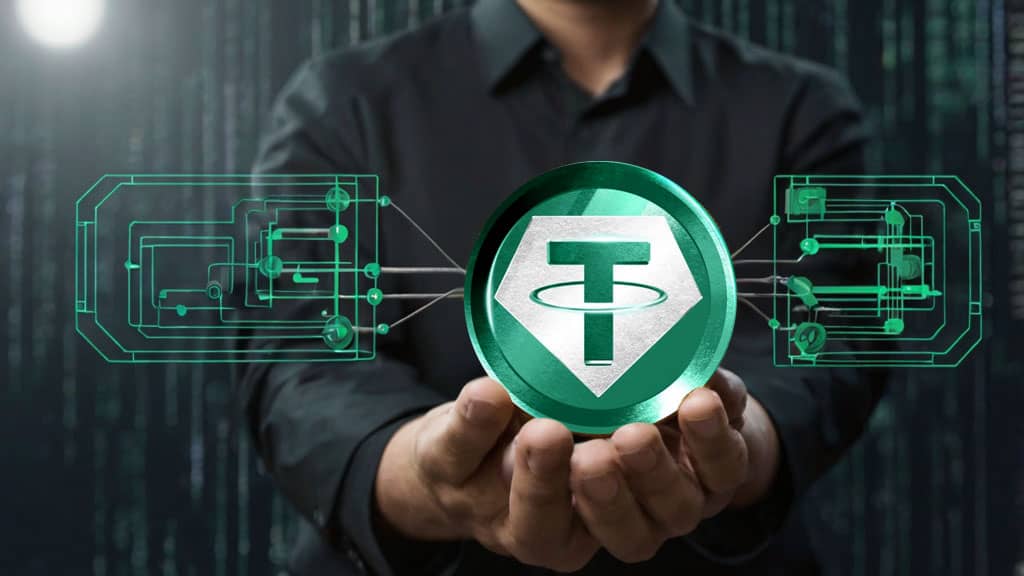What is Tether (USDT)?
Tether (USDT) is a stablecoin, a type of cryptocurrency that maintains a 1:1 peg with the US dollar. It is issued by Tether Limited, a company closely associated with the cryptocurrency exchange Bitfinex. USDT was designed to provide the benefits of digital currencies—such as fast transactions and security—while avoiding the extreme volatility seen in traditional cryptocurrencies like Bitcoin and Ethereum.
How Does Tether Work?
Tether operates on multiple blockchains, including Ethereum, Tron, Solana, Algorand, EOS, and Binance Smart Chain. This ensures high liquidity and broad usability across various cryptocurrency ecosystems. The primary mechanism behind Tether’s stability is the claim that each USDT token is backed by an equivalent reserve of USD or other assets.
Issuance and Redemption of USDT
- Issuance: When a user deposits fiat currency (e.g., USD) with Tether Limited, an equal amount of USDT tokens is minted and issued to the user.
- Redemption: When users want to convert their USDT back into fiat, they can redeem them with Tether Limited. The company burns the redeemed USDT to maintain the 1:1 backing ratio.
Tether’s Role in the Crypto Market
USDT is widely used in the cryptocurrency market for several reasons:
- Liquidity: Tether provides quick access to stable value during market downturns.
- Trading Pairs: Many cryptocurrency exchanges offer USDT trading pairs, making it easier to move between crypto assets without needing to convert to fiat.
- Remittances: USDT can be sent across borders with minimal fees, offering a faster and cheaper alternative to traditional banking systems.
- DeFi Integration: Many decentralized finance (DeFi) applications use USDT for lending, borrowing, and yield farming.
How is Tether Backed?
Tether claims that each USDT token is backed by a mix of assets, including:
- Fiat currencies (USD, EUR, CNH, etc.)
- Commercial paper
- Corporate bonds
- Treasury bills
- Cash equivalents
- Cryptocurrency reserves
Despite these claims, there have been concerns about the transparency of Tether’s reserves, leading to regulatory scrutiny and audits.
Tether’s Blockchains and Compatibility
Tether is issued on multiple blockchains, each with different transaction speeds, fees, and capabilities:
- Ethereum (ERC-20): Secure but can have high gas fees.
- Tron (TRC-20): Fast and low-cost transactions.
- Binance Smart Chain (BEP-20): Lower fees and high efficiency.
- Solana: Ultra-fast transactions with minimal fees.
- Algorand & EOS: Efficient networks with smart contract capabilities.
Users can transfer USDT across different blockchains using cross-chain bridges or exchange services.
Tether vs Other Stablecoins
| Feature | Tether (USDT) | USD Coin (USDC) | Binance USD (BUSD) | Dai (DAI) |
|---|---|---|---|---|
| Backing Assets | Mixed (fiat + reserves) | Fully backed by USD | Fully backed by USD | Crypto-collateralized |
| Issuer | Tether Limited | Circle | Binance | Decentralized |
| Blockchain Support | Multi-chain | Multi-chain | Binance Smart Chain | Ethereum-based |
| Transparency | Questioned | Regular audits | Regular audits | Fully decentralized |
| Use Case | Trading, DeFi | Trading, payments | Binance ecosystem | DeFi, loans |
Is Tether Safe?
Tether’s safety and reliability depend on liquidity, transparency, and regulatory compliance. The key concerns include:
- Transparency Issues: Tether Limited has faced criticism for not providing fully transparent audits.
- Regulatory Scrutiny: Authorities have investigated Tether’s reserves and financial dealings.
- Market Risk: If confidence in Tether declines, a mass redemption of USDT could impact the crypto market.
Despite these risks, USDT remains the most widely used stablecoin, with billions in daily trading volume.
Regulatory Challenges and Legal Issues
Tether has faced multiple legal and regulatory challenges:
- New York Attorney General (NYAG) Case: Tether paid an $18.5 million fine in 2021 for misleading statements about its reserves.
- Ongoing Audits: Regulators demand more transparency regarding Tether’s financial holdings.
- Global Scrutiny: Some governments question stablecoin issuers’ impact on the financial system.
To maintain legitimacy, Tether has promised more frequent audits and clearer financial disclosures.
How to Buy and Use Tether?
Buying and using USDT is straightforward:
- Create an Account: Register on a cryptocurrency exchange that supports USDT (e.g., Binance, KuCoin, Coinbase).
- Deposit Funds: Add fiat currency or another cryptocurrency to your account.
- Buy USDT: Exchange your fiat or crypto for Tether.
- Store USDT: Use a crypto wallet (e.g., MetaMask, Trust Wallet, Ledger) for safekeeping.
- Use USDT: Trade, send payments, or participate in DeFi applications.
Future of Tether
The future of Tether depends on market demand, regulatory developments, and competition. With the rise of central bank digital currencies (CBDCs) and fully audited stablecoins, Tether will need to maintain its dominance by ensuring transparency and regulatory compliance.

